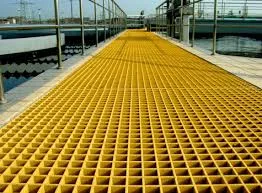
-
 Afrikaans
Afrikaans -
 Albanian
Albanian -
 Amharic
Amharic -
 Arabic
Arabic -
 Armenian
Armenian -
 Azerbaijani
Azerbaijani -
 Basque
Basque -
 Belarusian
Belarusian -
 Bengali
Bengali -
 Bosnian
Bosnian -
 Bulgarian
Bulgarian -
 Catalan
Catalan -
 Cebuano
Cebuano -
 China
China -
 China (Taiwan)
China (Taiwan) -
 Corsican
Corsican -
 Croatian
Croatian -
 Czech
Czech -
 Danish
Danish -
 Dutch
Dutch -
 English
English -
 Esperanto
Esperanto -
 Estonian
Estonian -
 Finnish
Finnish -
 French
French -
 Frisian
Frisian -
 Galician
Galician -
 Georgian
Georgian -
 German
German -
 Greek
Greek -
 Gujarati
Gujarati -
 Haitian Creole
Haitian Creole -
 hausa
hausa -
 hawaiian
hawaiian -
 Hebrew
Hebrew -
 Hindi
Hindi -
 Miao
Miao -
 Hungarian
Hungarian -
 Icelandic
Icelandic -
 igbo
igbo -
 Indonesian
Indonesian -
 irish
irish -
 Italian
Italian -
 Japanese
Japanese -
 Javanese
Javanese -
 Kannada
Kannada -
 kazakh
kazakh -
 Khmer
Khmer -
 Rwandese
Rwandese -
 Korean
Korean -
 Kurdish
Kurdish -
 Kyrgyz
Kyrgyz -
 Lao
Lao -
 Latin
Latin -
 Latvian
Latvian -
 Lithuanian
Lithuanian -
 Luxembourgish
Luxembourgish -
 Macedonian
Macedonian -
 Malgashi
Malgashi -
 Malay
Malay -
 Malayalam
Malayalam -
 Maltese
Maltese -
 Maori
Maori -
 Marathi
Marathi -
 Mongolian
Mongolian -
 Myanmar
Myanmar -
 Nepali
Nepali -
 Norwegian
Norwegian -
 Norwegian
Norwegian -
 Occitan
Occitan -
 Pashto
Pashto -
 Persian
Persian -
 Polish
Polish -
 Portuguese
Portuguese -
 Punjabi
Punjabi -
 Romanian
Romanian -
 Russian
Russian -
 Samoan
Samoan -
 Scottish Gaelic
Scottish Gaelic -
 Serbian
Serbian -
 Sesotho
Sesotho -
 Shona
Shona -
 Sindhi
Sindhi -
 Sinhala
Sinhala -
 Slovak
Slovak -
 Slovenian
Slovenian -
 Somali
Somali -
 Spanish
Spanish -
 Sundanese
Sundanese -
 Swahili
Swahili -
 Swedish
Swedish -
 Tagalog
Tagalog -
 Tajik
Tajik -
 Tamil
Tamil -
 Tatar
Tatar -
 Telugu
Telugu -
 Thai
Thai -
 Turkish
Turkish -
 Turkmen
Turkmen -
 Ukrainian
Ukrainian -
 Urdu
Urdu -
 Uighur
Uighur -
 Uzbek
Uzbek -
 Vietnamese
Vietnamese -
 Welsh
Welsh -
 Bantu
Bantu -
 Yiddish
Yiddish -
 Yoruba
Yoruba -
 Zulu
Zulu
fiberglass ducts demonstrate exceptional resistance against
Fiberglass ducts are increasingly being recognized for their exceptional resistance to various environmental challenges, making them a popular choice in many industries. These ducts, constructed from a composite material of glass fibers and resin, not only offer superior performance but also enhance the longevity and efficiency of HVAC systems.
One of the most significant advantages of fiberglass ducts is their resistance to corrosion. Unlike metal ducts, which can rust and corrode over time due to moisture and chemical exposure, fiberglass maintains its structural integrity even in the harshest of environments. This resistance to deterioration is vital in industries such as food processing, pharmaceuticals, and chemical manufacturing, where cleanliness and hygiene are paramount.
In addition to corrosion resistance, fiberglass ducts excel in thermal insulation. The inherent insulation properties of fiberglass help to minimize heat loss or gain, thus improving energy efficiency. This characteristic is particularly beneficial in maintaining consistent temperatures in commercial and industrial settings, leading to significant cost savings in energy bills. As a result, businesses are increasingly turning to fiberglass ducts as an environmentally friendly alternative that can contribute to sustainability goals.
Fiberglass ducts also demonstrate remarkable fire resistance. ASTM E84 tests show that these ducts have a low flame spread rating, making them a safer option for fire-prone environments. This property is especially crucial in applications where fire safety is a top concern. By incorporating fiberglass ducts, facility managers can enhance their overall fire protection strategy, providing peace of mind while ensuring compliance with safety regulations.
fiberglass ducts demonstrate exceptional resistance against

Another noteworthy aspect of fiberglass ducts is their lightweight nature. Compared to traditional metal duct systems, fiberglass is significantly lighter, making installation and handling much easier. This feature reduces labor costs and expedites project timelines, allowing for quicker implementation of HVAC systems.
Finally, the smooth interior surfaces of fiberglass ducts minimize friction, resulting in improved airflow and reduced noise levels. This design consideration not only enhances system performance but also contributes to a more comfortable and quieter working environment.
In conclusion, fiberglass ducts are an exceptional choice for modern ventilation solutions due to their outstanding resistance to corrosion, insulation properties, fire safety, lightweight design, and enhanced airflow. As industries continue to seek efficient, sustainable, and reliable duct systems, fiberglass technology is paving the way for a brighter, more resilient future in HVAC applications.









